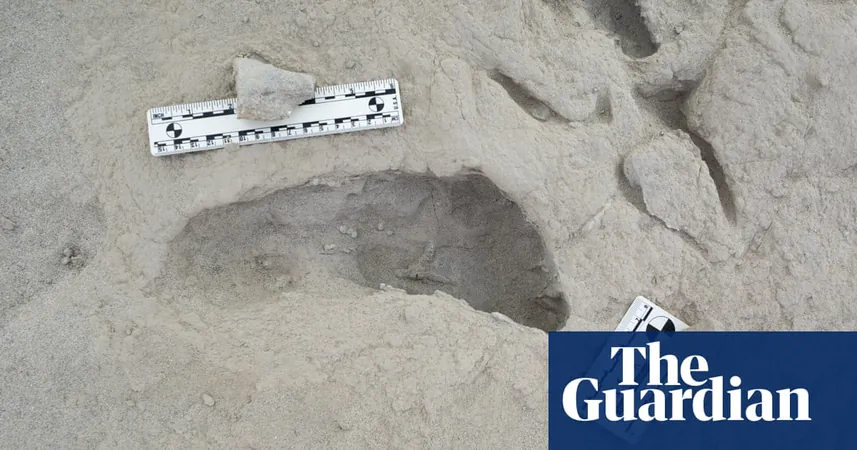
Ancient Footprints in Kenya Reveal Surprising Coexistence of Early Human Relatives!
2024-11-28
Author: Jia
Ancient Footprints in Kenya Reveal Surprising Coexistence of Early Human Relatives!
In a stunning revelation, researchers have uncovered fossilized footprints in the Turkana Basin of northern Kenya, dating back approximately 1.5 million years. These footprints have provided compelling evidence that two distinct species from the human family tree, namely Paranthropus boisei and Homo erectus, shared the same landscape in close proximity to one another.
According to Dr. Kevin Hatala, the lead author of the study published in the journal Science, the analysis of these ancient tracks indicates that the two species walked on the same muddy banks within a matter of hours or days. This groundbreaking discovery is the first direct evidence suggesting that our distant relatives interacted with each other in a shared habitat.
While previous findings, such as skeletal fossils, hinted at the possibility of coexistence, they were often too vague to confirm interactions between these species due to the vast timespans they covered. However, these newly discovered footprints offer a rare snapshot of their potential encounters.
The footprints attributed to Paranthropus boisei, affectionately nicknamed 'Nutcracker Man' due to its distinctive large teeth, exhibited unique anatomical features that differ from modern human footprints. The stride length indicated the individual was walking at a brisk pace, yet the footprint structure revealed a different foot anatomy compared to that of Homo sapiens.
Additionally, researchers discovered footprints with characteristics more akin to those of Homo erectus in close proximity, suggesting that both species inhabited the lakeside together. Dr. Hatala believes that 'given their coexistence, it’s likely they were aware of each other, possibly recognizing fundamental differences between them.' This raises intriguing questions about how these species may have interacted, potentially sharing the landscape and resources without direct competition.
Furthermore, the team highlighted that similar instances of dual species footprints have been identified from other fossilized finds in the region, leading to wider implications for the understanding of human evolution and interaction.
Renowned anthropologist Prof. Chris Stringer from the Natural History Museum in London, noting the importance of this research, stressed that these findings paint a vivid picture of our ancient relatives co-existing in a dynamic ecosystem. He added that the two species likely had different diets, which could explain their close but non-competitive living arrangements.
This discovery not only sheds light on the behaviors of our early ancestors but also significantly contributes to our understanding of human evolutionary history. As researchers continue to explore these ancient footprints, many unanswered questions remain about the nuances of life for our prehistoric relatives. The revelation that different species could thrive side by side in a shared environment invites a reevaluation of how we perceive human evolution and interactions.
Conclusion
Stay tuned for more breakthroughs in the captivating journey of human ancestry!


 Brasil (PT)
Brasil (PT)
 Canada (EN)
Canada (EN)
 Chile (ES)
Chile (ES)
 España (ES)
España (ES)
 France (FR)
France (FR)
 Hong Kong (EN)
Hong Kong (EN)
 Italia (IT)
Italia (IT)
 日本 (JA)
日本 (JA)
 Magyarország (HU)
Magyarország (HU)
 Norge (NO)
Norge (NO)
 Polska (PL)
Polska (PL)
 Schweiz (DE)
Schweiz (DE)
 Singapore (EN)
Singapore (EN)
 Sverige (SV)
Sverige (SV)
 Suomi (FI)
Suomi (FI)
 Türkiye (TR)
Türkiye (TR)